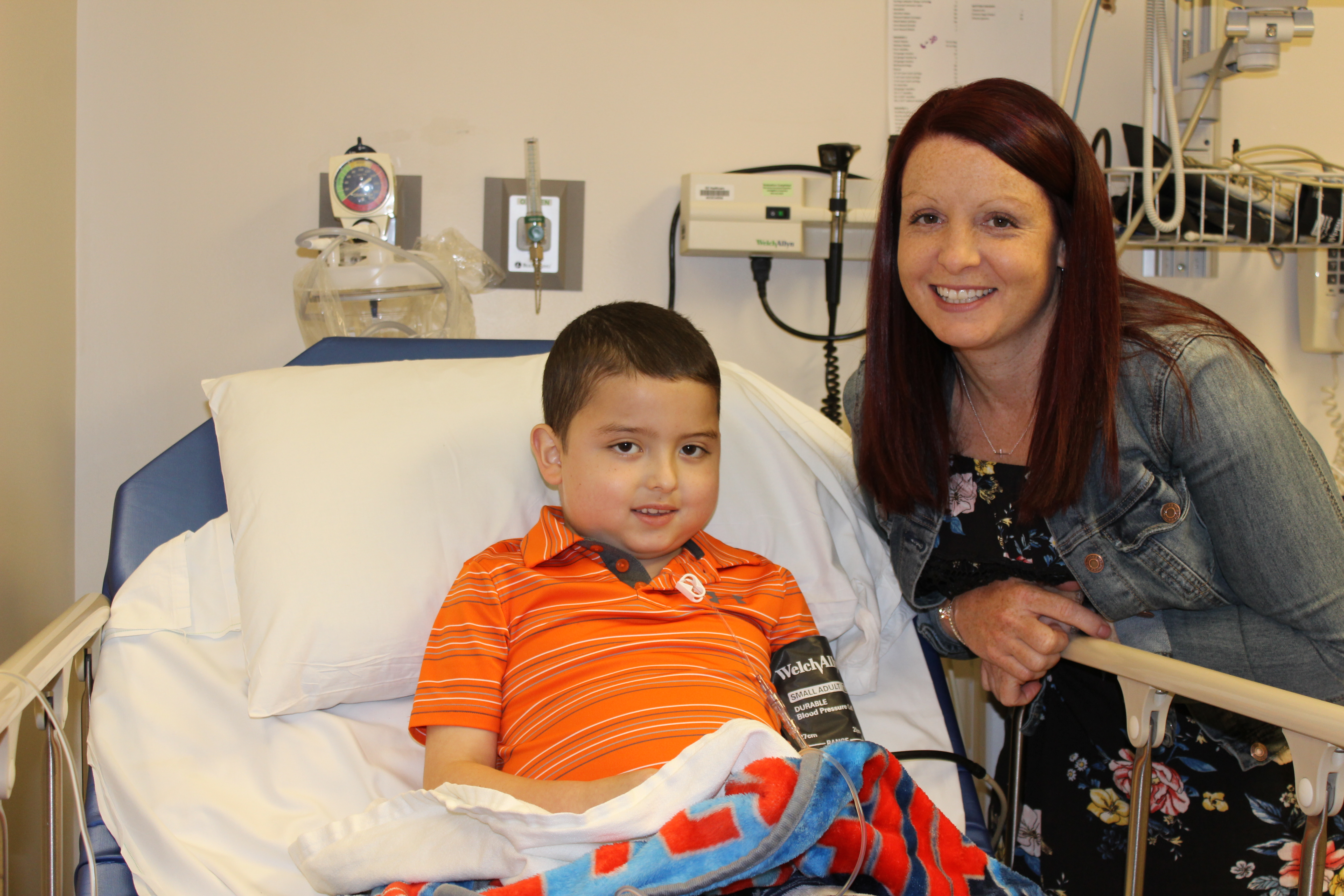Phoenix Hunter is like most 7-year-old boys. He likes video games and Legos. Baseball fills his summers, and after school, he participates in gymnastics. He hopes to be a scientist someday.
Unlike most other 7-year-olds, though, Phoenix is battling a recent diagnosis of B-Cell acute lymphocytic leukemia (ALL).
Before the diagnosis
When Phoenix started experiencing leg pain in mid-May, his mom, Danielle Perry, thought it may just be a gymnastics injury. However, after repeated visits to a walk-in clinic with no relief to the pain, he had an X-ray and blood work done on June 1.
A day later, the family received a call from a provider at their clinic who said the tests came back irregular, and they’d need to get from their home in Park Rapids, Minnesota, to Fargo, North Dakota, or Minneapolis that night. They chose Sanford Children’s Hospital in Fargo. When they arrived, they met with an internist who said the team was 99.9 percent sure that it was leukemia.
“It was like a punch in the gut,” Danielle said. “It was a very surreal moment.”
Planning for the unknown
In medicine, you plan for the unknown. Every patient, every situation and every diagnosis is different. Phoenix’s case was no exception.
“It was planned at the moment. People were saying we need all these things just at once, and people said ‘OK, let’s do it for this kid,’” said Nathan Kobrinsky, M.D., or Dr. K as his patients call him, a Sanford Health pediatric oncologist, who was working the weekend Phoenix arrived.
Employees from a variety of departments including pediatric oncology, anesthesiology, pathology, nursing, interventional radiology, lab came together to get the needed work completed.
“There’s an order it all needs to be in, and that meant there needed to be tremendous flexibility from the team,” Kobrinsky said.
It was more than just the medical testing and procedures that had to happen. Keeping Phoenix and his parents informed of what was happening and why it was happening was just as important.
“Communication with the family has to be really continuous,” Kobrinsky said.
“We were just trying to wrap our head around it. What it is? What does it do? Is it curable? Who gets it? Why do they get it? What can we do for Phoenix? What can we do to keep him comfortable? It was really just a whirlwind,” Danielle said.
Diagnosis to treatment in less than 24 hours
Less than 24 hours after arriving at Sanford Children’s in Fargo, Phoenix had a confirmed leukemia diagnosis and was set up with his treatment plan, already receiving the chemotherapy he needed.
“I couldn’t even have imagined things would move that quickly,” Danielle said. “As soon as we got to Sanford, Dr. K told us, ‘I have to get some people together, and we don’t normally have the OR (operating room) going today for this type of procedure, but I will get us some people together, and we will get this done.’”
For Kobrinsky, who has been a pediatric oncologist for more than 30 years, seeing the teamwork to make it happen made him proud.
“In the medical profession and the field of health, we aim to provide health, healing, comfort and care. When everybody comes together in a crisis, it’s amazing,” Kobrinsky said.
Care from those who care
“When you first hear ‘cancer,’ you’re scared. As a parent, you can’t wrap your head around that,” Danielle said.
The initial 24 hours from diagnosis to treatment was indeed a whirlwind, but it was made easier by a compassionate and caring team.
“They weren’t saying medical terms that we wouldn’t understand. They make sure you understand,” said Danielle. “The doctors and nurses are all about teaching and explaining, and they say no question is crazy. Ask us today, ask us tomorrow, ask us 50 times. If you have to call me in the middle of the night, you do that.
“The experience we have had at Sanford -– inpatient and outpatient –- that’s why we chose not to go anywhere else. We wanted care close to home, and we wanted good care obviously, and Sanford covers that,” Danielle said.
The road ahead
Phoenix has another 2 1/2 years of treatment to go, Kobrinsky said. The next four months will be heavy treatment, but then it will be primarily outpatient.
“The next few months will certainly limit his ability to do regular kid things, but not entirely,” Kobrinsky said. “We strive to maintain normalcy. We need to pay attention to normal growth and development for kids.”
For Danielle, she knows her son is up to the challenge. She said Phoenix is happy-go-lucky, and through the treatment so far, he hasn’t lost that.
“I still see that spark in him.”
The good news is the likelihood of him being cured is very high, Kobrinsky said.
A mom’s hope for her son
As Danielle thinks about the past month of treatment, she knows that they’ve already made it so far.
“In the short term, I hope he gets rid of this, and I hope he gets rid of this without too many derailments or reoccurrence,” she said.
“Right now, it’s a tough time, but the only way to get around something is to just go through it. So that’s where we’re at. We’re just going through it,” Danielle said. “Phoenix is stronger than people know. When it’s all said and done, I hope that he’s just a happy and normal kid.”
…
Posted In Cancer, Children's, Health Information, Pathology
